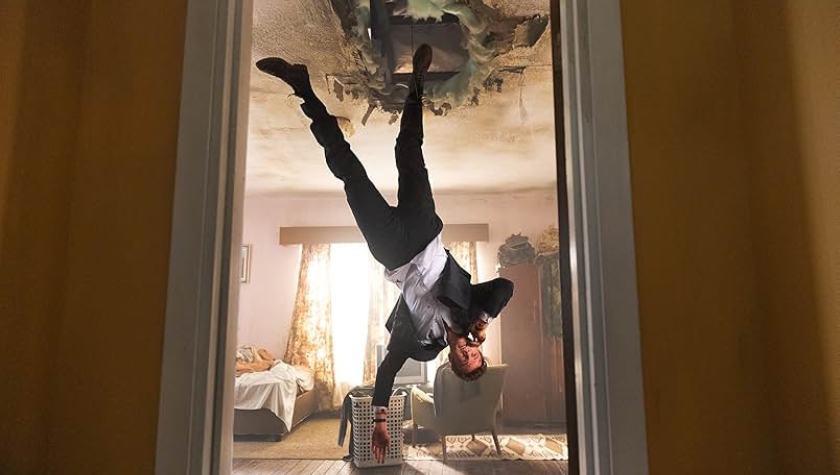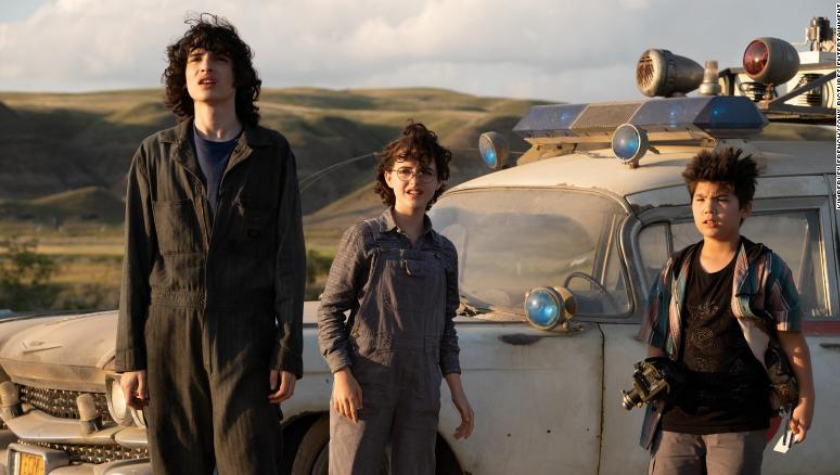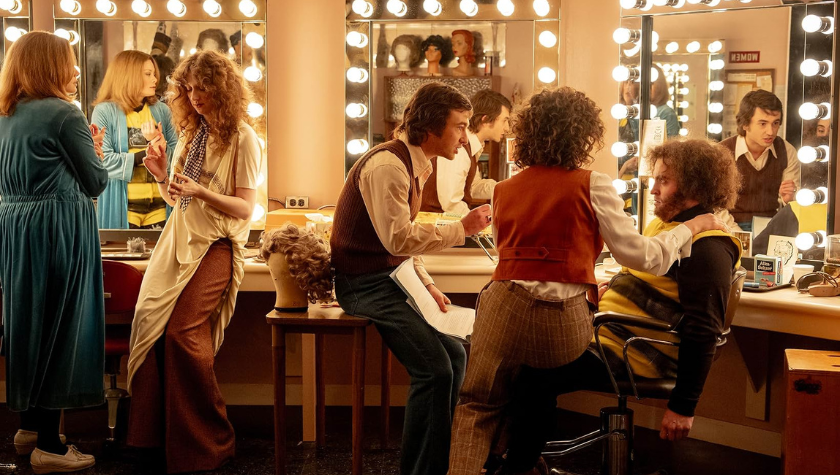SATURDAY NIGHT and how to write a historical drama
October 17, 2024
It’s likely that when Saturday Night Live premiered on October 11, 1975, even the show’s creator didn’t see it lasting 50 years. The chaotic start of the ‘not ready for prime time’ players was filled with uncertainty, confusion, hostility and a revolutionary spirit. In the new film Saturday Night written by Gil Kenan and Jason Reitman, the audience gets a behind-the-scenes glimpse of the 90 minutes leading up to the show’s premiere.
Saturday Night is a fictionalized version of the night’s events and, although it takes plenty of liberties, it maintains the spirit of what creator Lorne Michaels, NBC Director of Weekend Late Night Programming Dick Ebersol and a cast of soon to be famous comedians went through on that fateful night 49 years ago. There’s no doubt that some of the events depicted in the movie did occur, but there is plenty of creative license taking place to help drive the narrative of the film.
For screenwriters interested in writing a historical drama, ensemble piece or a story with a ticking clock, here are five lessons that a writer can take away from Saturday Night.
1. Real-Time Countdown
Having a story that takes place in real time offers a sense of urgency, and having a specific countdown guarantees higher stakes. One classic film that took this approach was the Academy Award winning western High Noon, about a sheriff ready to call it quits who must defend his town by a posse eager to kill him when they arrive. Near-real-time films like Ferris Bueller’s Day Off and Victoria, which were referenced in a Final Draft interview with Reitman and Kenan, were also used as inspiration for Saturday Night.
Countdowns, whether they are leading to a bomb exploding or the start of a TV show at 11:30 on a Saturday night, do add tension because once the clock hits zero, or noon or 11:30, the protagonist wins or loses. In Saturday Night, Lorne Michaels (Gabriel LaBelle) must ensure his show is ready to go live at a specific time or risk the integrity of his dream and his ability to run it. It’s win or lose against a clock where if he fails, reruns of The Tonight Show with Johnny Carson take over and Saturday Night Live is dead.
The countdown clock or real-time portrayal of events is a great device if it works in the story you’re wanting to tell. It can even be used as an antagonist; Saturday Night has no enemies, but rather Michaels trying to get everything on track with time being the villain getting in his way.
2. Show Behind-the-Scenes
Movies can be a way to pull back the curtain and reveal what happened leading up to a major event or historic change. In Saturday Night, it’s the final 90 minutes leading up to the SNL premiere, but there are countless films that have similar ‘behind-the-scenes’ true stories. There is no limit to what a filmmaker can focus on, for example, with politics and journalism there is All the President’s Men, She Said or Spotlight, sports has films like Moneyball or The Blind Side, and finance has stories like Dumb Money and The Big Short.
Movies that go behind-the-scenes are always intriguing because most people take the success of an event for granted. Journalists reporting on Nixon and Watergate is supposed to happen, but revealing the struggles of telling the stories, those who tried to suppress it and the coincidences that made it a groundbreaking success is what audiences didn’t know they wanted to see.
The same holds true for Saturday Night. 49 seasons later, who wouldn’t think Saturday Night Live was going to be a cultural phenomenon? The reason the filmmakers wanted to tell this story was to show how this staple in mainstream culture almost didn’t happen.
You don’t have to find something as groundbreaking as the previously mentioned films. As a storyteller, keep an ear out for those incredible stories that go behind the scenes.
3. Even Rollercoasters Take a Breather
Rare is the roller coaster that starts off fast and doesn’t let up. Usually there are moments when the ride slows down and allows the riders to take a breather. Movies are no different. If you have nonstop thrills and chaos, the audience will get too overwhelmed. Saturday Night is not an action film, but the movie deals with Michaels in a constant state of panic and mayhem, moving throughout the studios, trying to please stubborn talent, pushing crew to work faster (or even get off their butts) and trying to make sure everything is set to go before the deadline.
This constant moving and running around is offset by moments where there are just 2-3 people having a calm chat. These scenes still advance the story but it allows time for the audience to breathe.
An example is after the hectic opening moments of the film, Michaels sits in a bay with Rosie Shuster (Rachel Sennott), his ex-wife/SNL writer, as they watch and comment on a pre-recorded commercial. It’s calming and free from the craziness on the other side of the door.
4. Divided We Fall
At the beginning of the movie as Michaels is making his way around the studio, most of the characters seem to be out for themselves or trying to sabotage the show for their own benefit or entertainment. They think about their career, their time and their goals. This is constantly in conflict with the final result Michaels wants to achieve. It also makes our hero’s life a living hell, which we know is good for conflict and story.
But, at some point, this needs to flip. It’s up to the protagonist to find a way to bring the team together to succeed. After spending the majority of the movie trying to explain the point of this sketch/music/variety show to people who don’t seem to get it (remember, at the time people weren’t sure what he was trying to create) or question their role in the process, Michaels finally gets the point across with some help. Once he’s able to make it click and the cast and crew see the magic, that’s when people come together as a team and help our hero win.
Need another example? Check out any number of Marvel movies when the team assembles for the climax of the film.
5. Write a Love Letter
Having grown up on his father’s sets with comedians who got their start on Saturday Night Live, it’s apparent that Jason Reitman has a fondness for the show and what it meant to popular culture. Reitman’s film Ghostbusters: Afterlife was a love letter to the film franchise that Ivan Reitman (his father) created and it was considered a success both commercially and critically.
Saturday Night feels like the same type of film from someone who loves and appreciates the nostalgia and historical impact. As a screenwriter, if there is something you love, find the story within it you want to share. It doesn’t have to be something nostalgic either. Some people love the Roman Empire or chess or jazz – Damien Chazelle’s love of jazz inspired Whiplash. If you’re passionate about something, try to find the story within that passion.
---
Saturday Night uses a lot of tools and tricks that cross genres. Screenwriters can take these ideas and implement them in their own stories to maximize audience engagement and intrigue whether they’re working on a historical drama, a comedy or comic book movie.
Written by: Steven Hartman
Steven Hartman is an award-winning, optioned screenwriter. He was a Top 5 Finalist in Big Break’s Historical Category in 2019 and won Best Action/Adventure in Script Summit’s Screenplay Competition in 2021. He holds a Bachelor of Arts degree from Columbia College and had internships at Jerry Bruckheimer Films and Village Roadshow Pictures. Steve is a full-time writer and creative video producer by day and a screenwriter and novelist by night.



